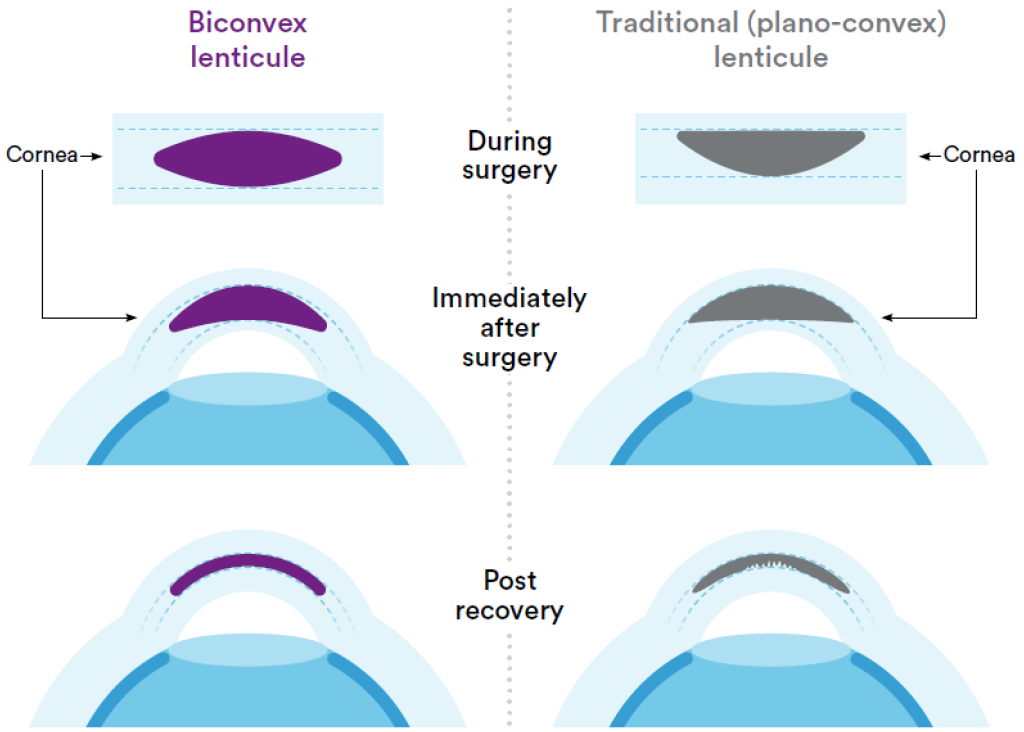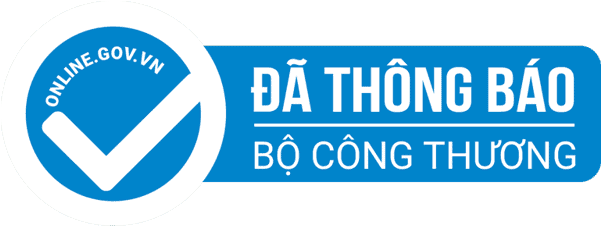Comparison of SILK Surgery and ReLEx SMILE/SMILE Pro
Laser refractive surgery has advanced significantly, offering patients faster recovery and improved visual outcomes. Among the most popular techniques today are SILK , ReLEx SMILE and SMILE Pro . In this article, Japan International Eye Hospital will compare the similarities and differences between these three technologies, and clarify the outstanding advantages of SILK - the latest generation of laser refractive surgery - in an objective and comprehensive manner.
1. Refractive Surgery Technology
SILK
SILK is a refractive surgery procedure developed by Johnson & Johnson (USA), one of the world’s leading companies in healthcare and advanced medical device manufacturing.
The SILK procedure uses the latest generation of femtosecond laser technology, with the Elita system - an FDA - approved platform - ensuring safety and efficacy during the procedure. The Elita system is specifically designed to perform refractive surgeries with precise corneal tissue control, minimizing risks and enhancing treatment outcomes.
ReLEx SMILE/ SMILE Pro
ReLEx SMILE and SMILE Pro are advanced refractive surgery procedures developed and manufactured by Carl Zeiss (Germany), a global leader in optics and optoelectronics technology.
- The ReLEx SMILE procedure is performed using the VisuMax 500 system, which employs femtosecond laser technology to create a small incision at the edge of the cornea, correcting refractive errors without the need for a corneal flap. This approach is minimally invasive and offers high treatment effectiveness.
- The SMILE Pro procedure utilizes the VisuMax 800 system, an upgraded version of the VisuMax 500. It incorporates more advanced femtosecond laser technology with faster speed and improved precision, enhancing surgical outcomes while reducing procedure time.
ReLEX SMILE and SMILE Pro surgeries use the Visumax laser system from Carl Zeiss (Germany).
2. Refractive Surgery Procedure
Similarities
All three laser vision correction procedures - SILK, ReLEx SMILE and SMILE Pro utilize femtosecond laser technology to create a lenticule within the cornea. This lenticule is then extracted through a small incision, reshaping the cornea and improving the patient’s vision.
Difference
While both SILK and ReLEx SMILE use femtosecond lasers to form a lenticule in the cornea, SILK refractive surgery stands out due to its exclusive biconvex lenticule design, a proprietary innovation by Johnson & Johnson. This unique bi-convex shape helps reduce corneal folding after lenticule removal, allowing the corneal layers to realign more smoothly. As a result, higher-order aberrations are minimized, and visual quality is enhanced. The tapered edges of the SILK lenticule also help preserve corneal nerve fibers, significantly reducing post-operative dry eye and maintaining the biomechanical integrity of the cornea.
This represents a major improvement over the plano convex lenticule (flat on one side, curved on the other) used in the ReLEx SMILE and SMILE Pro - the latter being an upgraded version of ReLEx SMILE. Although SMILE Pro features faster laser application and reduced tissue disruption, it still employs the same lenticule shape, which may result in a higher risk of dry eyes and certain visual quality issues post-surgery.

3. Treatment threshold of Laser Vision Correction Methods
All three procedures - SILK, ReLEx SMILE, and SMILE Pro - share the same limitation: they can only treat myopia and astigmatism, but not hyperopia (farsightedness). Below is a comparison chart of the treatment ranges for each method:
| Procedure | Myopia | Astigmatism | Minimum corneal thickness required |
|---|---|---|---|
| SILK | -12.00D | -6.00D | ≥ 480 µm |
| SMILE Pro | -10.00D | -5.00D | ≥ 480 µm |
| ReLEx SMILE | -10.00D | -3.00D | ≥ 480 µm |
Comparison table of treatment thresholds of SILK, ReLEx SMILE and SMILE Pro
- SILK offers the broadest treatment range, capable of correcting myopia up to -12.00 D and astigmatism up to -6.00 D, making it a suitable option for patients with high refractive errors.
- SMILE Pro and ReLEx SMILE have narrower treatment ranges, with a maximum of -10.00 D for myopia and -5.00 D or -3.00 D for astigmatism, making them more appropriate for patients with mild to moderate refractive errors.
- All three procedures require a minimum corneal thickness of 480 µm to ensure corneal safety after surgery. However, actual eligibility depends on how corneal thickness correlates with the degree of myopia and astigmatism in each individual case.
Choosing the most suitable method should be based on a comprehensive eye examination, allowing the ophthalmologist to evaluate corneal thickness and recommend the optimal surgical option for each patient.
4. Laser Energy Used in Refractive Surgery Methods
Although the SILK, ReLEX SMILE and SMILE Pro methods all use laser technology to correct refractive errors (myopia and astigmatism) and restore vision, the SILK procedure, equipped with the most advanced laser technology, offers several notable advantages over ReLEx SMILE and SMILE Pro.
| Criteria | SILK | ReLEx SMILE | SMILE Pro |
|---|---|---|---|
| Laser pulse duration | ~150fs | 220-580fs | 220-580fs |
| Laser pulse frequency | 10MHz | 0.5MHz | 2MHz |
| Laser pulse energy | 40-50nJ | 125-170nJ | 125-170nJ |
| Laser point distance | ~1µm | 3-4.5 µm | 3-4.5 µm |
| Laser exposure time | ~16s | 23s | 10s |
Comparison table of laser parameters used in SILK, ReLEx SMILE and SMILE Pro
- Significantly lower laser energy (~40-50 nJ compared to 125-170 nJ)
- Less corneal tissue damage: The lower laser energy helps minimize thermal effects and corneal tissue damage.
- Preserves more corneal cells: This is essential for faster recovery and maintaining long-term corneal strength after surgery.
- Smaller laser spot spacing (~1 µm vs. 3-4.5 µm)
- Higher precision: Smaller spot spacing results in a smoother cutting surface, making it easier and faster for the surgeon to dissect and extract the stromal lenticule.
- Lower risk of inflammation and dry eyes: The smaller spot spacing and smoother cut surface minimize disruption to corneal nerve microstructures, reducing inflammatory responses and helping to maintain tear film stability - thereby lowering the risk of postoperative dry eye.
- Higher pulse frequency (10 MHz vs. 2 MHz)
- Faster laser time (~16 seconds vs. ~23 seconds in SMILE): SILK offers shorter laser time than ReLEx SMILE but slightly longer than SMILE Pro (~10 seconds), due to its higher spot density, which ensures smoother and more accurate incisions. Nevertheless, 16 seconds is still a quick and comfortable procedure that does not compromise surgical outcomes.
- Reduced thermal impact on the cornea: Each SILK laser pulse uses only about 40-50 nJ of energy - much lower than ReLEX SMILE pulse, 125-170nJ, which helps minimize thermal accumulation in the corneal tissue.
.png)
SILK uses lower laser energy, smaller spot spacing, and a higher pulse frequency - enhancing precision, minimizing corneal tissue damage, and optimizing treatment outcomes compared to ReLEX SMILE and SMILE Pro.
4. Post-operative symptoms after SILK, ReLEX SMILE, and SMILE Pro surgeries
All three procedures SILK, ReLEX SMILE and SMILE Pro are considered highly safe refractive surgeries. They are flapless procedures that do not require mechanical blades and involve minimal incisions, significantly reducing the risk of infection or flap-related complications commonly associated with LASIK. With the use of advanced femtosecond laser technology, these methods also allow for quicker recovery times and fewer complications compared to traditional refractive surgeries.
However, as with any surgical procedure, patients may experience some temporary side effects following SILK, ReLEX SMILE and SMILE Pro surgery, including:
- Light sensitivity: Eyes may become sensitive to bright lights, especially in the first few days after surgery.
- Hazy or foggy vision: Vision may be slightly blurred during the initial recovery period as the cornea adjusts.
- Difficulty with near vision: Some patients may experience temporary challenges focusing on nearby objects, such as when reading.
- Dry eyes: A temporary disruption of the corneal nerves may lead to dryness, which usually improves with lubricating eye drops and proper care.
- Morning eye discomfort: Some may feel dryness or stickiness upon waking, but this typically resolves as healing progresses.
These symptoms are generally mild and temporary, gradually improving over time, especially when post - operative care instructions are followed closely.
Thanks to its next-generation laser technology developed - with lower energy levels, tighter laser spot spacing, and a smoother cutting surface, SILK surgery method better preserves the biomechanical integrity of the cornea. This results in significantly milder and shorter-lasting side effects, offering a more comfortable post-operative experience and faster visual recovery - as smooth as SILK.
5. Surgery Costs
The costs of refractive surgery using SILK, ReLEX SMILE and SMILE Pro methods vary depending on the technology applied and the medical facility providing the service.
Currently, the cost of SILK and ReLEx SMILE refractive surgery at Japan International Eye Hospital is as follows:
- SILK surgery: 55 million VND for 2 eyes.
- ReLEx SMILE surgery: 45 million VND for 2 eyes.
In particular, all patients undergoing refractive surgery will receive a gift package worth 4.5 million VND, including:
- Pre-operative Intensive Examination Package
- Eye protection and goggles
- 12 months free check-up
For the SMILE Pro method, the cost of surgery varies between different medical facilities, ranging from 53 - 55 million VND for 2 eyes.
Note, costs may vary depending on the incentive program and policies of each hospital. For detailed and updated information, patients should contact reputable medical facilities directly.
